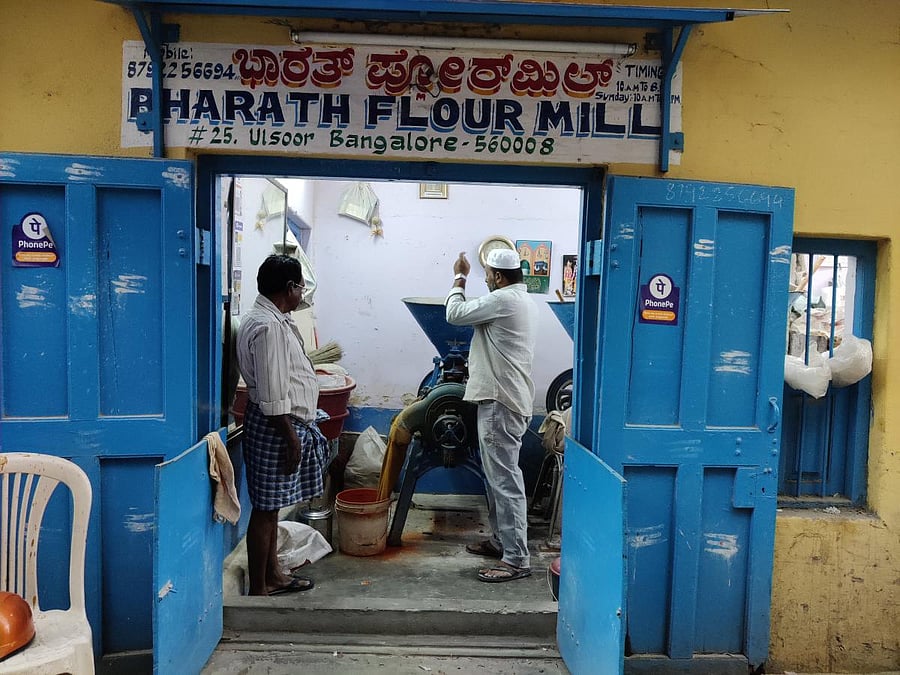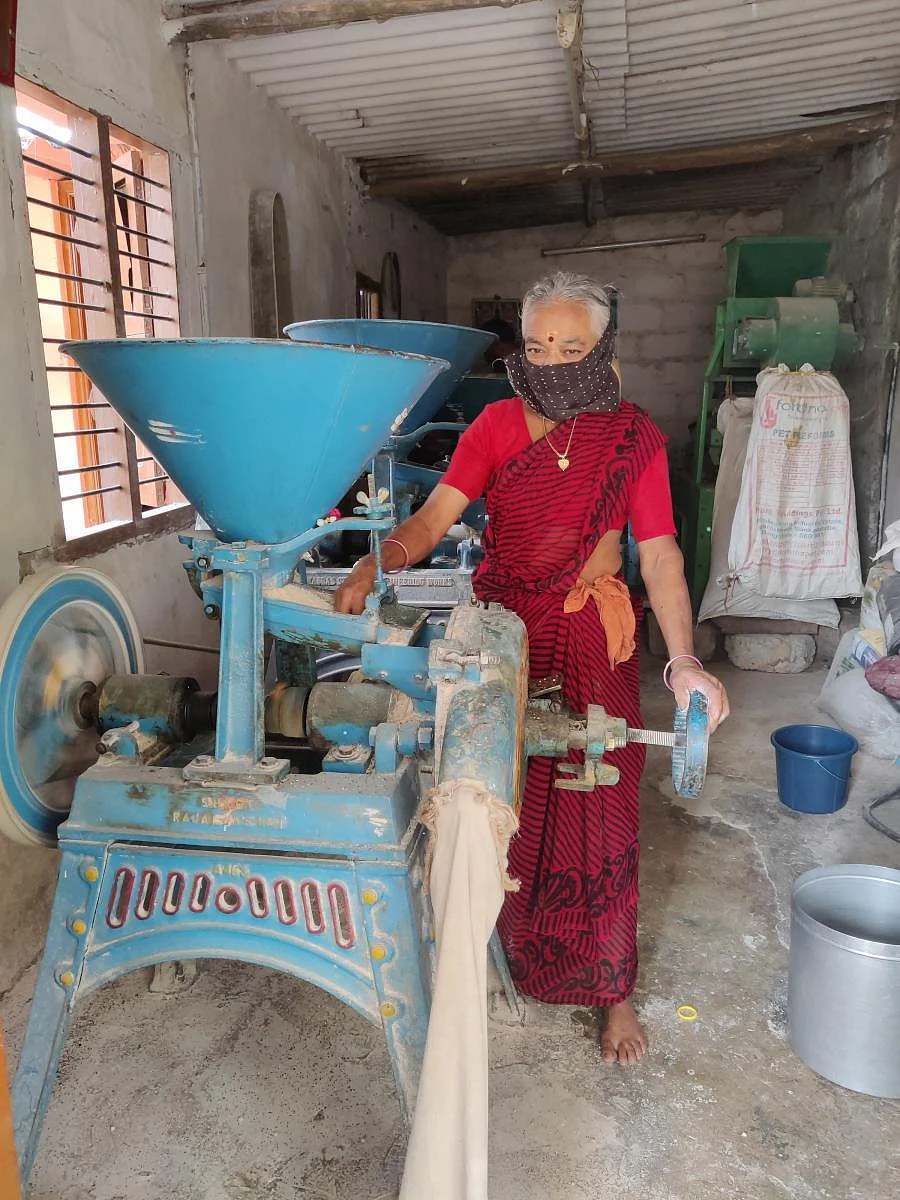

The smell of chilli and coriander seeds hang heavy in the air. Clouds of flour float ethereally before landing at Vinodamma’s feet as she walks through the narrow space of her flour mill shop in Bengaluru.
The smells, sounds and sights that flour mills conjure up are all too familiar. But they may soon be a thing of the past. Neighbourhood flour mills like Vinodamma’s unit had flourished in the city just a decade ago. Six to seven years ago, when her husband set up the mills, they had no trouble paying electricity bills, managing repairs and getting the stone grinding plates changed every month.
Now, she barely makes Rs 200 to Rs 300 a day. Her electricity bill eats up a considerable chunk of the mill’s income and with the plate change and repair costs, the shop is barely breaking even.
There is no question about the future of the mill. “I think that the machines will only run until I am there. After I go, I don’t recommend that my family continues the business,” she says.
This slow transition out of using flour mills intensified due to the pandemic according to Indramma, the owner of another flour mill near Nagarbhavi. The mill has been around since 1979.
Most of the customers were day-wage labourers who would bring in grains and cereals from ration shops or villages. Going to the mill was important to put food on their table daily. Unlike packaged food, acquiring unbranded loose commodities like ragi and wheat and grinding them at mills for Rs 5 per kg was cost-effective than buying packaged flour.
“Many of them have not returned to the city from their villages. Even if they have come back, they don’t come to the mill anymore,” she says. Added to their woes are the frequent power cuts during monsoons and summers.
Connection to food
Over the years, everyday consumers have lost touch with the source of food, she says. In the past, families would often source cereals and grains, clean and dry them in the sun, and then transport small quantities to and from these mills. Such a process would require careful estimation and forethought.
“It is a faster-paced world now. People do not have the time to ensure that their food is unadulterated,” says Indramma.
K C Raghu, a food expert, has noticed a large-scale shift towards pre-packaged and processed food during the past two years. “This trend has not reversed even as we recover from the pandemic.”
According to Syed Munwar, who has been running a mill for 30 years, a key advantage that mills have over large-scale processing industries is how consumers customise their end product. “Some people want their ragi flour to be of a coarser consistency. Others like a finer consistency. People who come to my mill ask me to change it according to the food tradition and recipe followed in their house,” he says.
Lakshmi N, who has been getting ragi, rice, wheat and corn ground over the last 20 years, says the mill gives her the option to make sambar pudi according to the recipe that her mother and grandmother shared. Right from the choice and proportion of chillies and coriander seeds to the consistency, all of it matters.
Some even add a handful of dal. “If I use the store-bought version of sambar pudi, my dishes will lose the flavour that generations have carried forward,” she says.
The advantages of these old school flour mills don’t end here. As K C Raghu will tell you, “flour mills that use stone plates preserve the volatile compounds present in spices. This is because, during the grinding, the stone plates do not overheat, unlike metal blades.”
Even in the case of atta, neighbourhood flour mills do not separate the ‘bhusa’ part of wheat which is packed with fibre and is arguably the most useful part of wheat. This is not the case with large scale atta and maida processing units.
“In any grinding process in these neighbourhood mills, the fibre is preserved which enables the slow absorption of sugar. Diabetes is a huge concern in India and the lack of a fibrous diet is a major contributor to this,” he says.
Consumers can also be assured that there will be no use of preservatives or adulteration involved. In this way, flour mills help people achieve a diet that has, “minimally processed and regionally sourced foods,” he says.
Fostering community
Customers at flour mills are generally regulars. If someone new comes in, it is generally because a regular has recommended the mill. 65-year-old Murthy in Ulsoor, for example, has been going to the Syed Munawar’s flour mill for 30 years.
Where will he go if the shop is closed for the day? “I will wait,” he says.
The mills cultivate a peculiar sense of loyalty. Even Vinodamma’s regulars refuse to go to a mill that is just 2km away.
This, Suresh Moona, a Bengaluru-based historian, feels is because of the central space that mill operators occupied in neighbourhoods in the recent past.
“When I was younger, in just five to six visits, the mill owner would not only know which consistency of flour your house preferred but also other details. In a way, the mill operator became like an information bulletin, where people in the neighbourhood would meet,” he says.
Ravi N, another regular at Munawar’s mill, has many memories attached to the unit. He has been coming to the mill from when Munawar’s father operated the machines. With such a long association, he knows almost everyone who comes here.
Despite the loud whirring of the machine, he gets a nice chat in and goes about his day. “There is satisfaction and happiness that you can get by doing small chores. Regulars come for a variety of reasons but also because this slow routine suits us,” he says.
Check out the latest videos from DH: